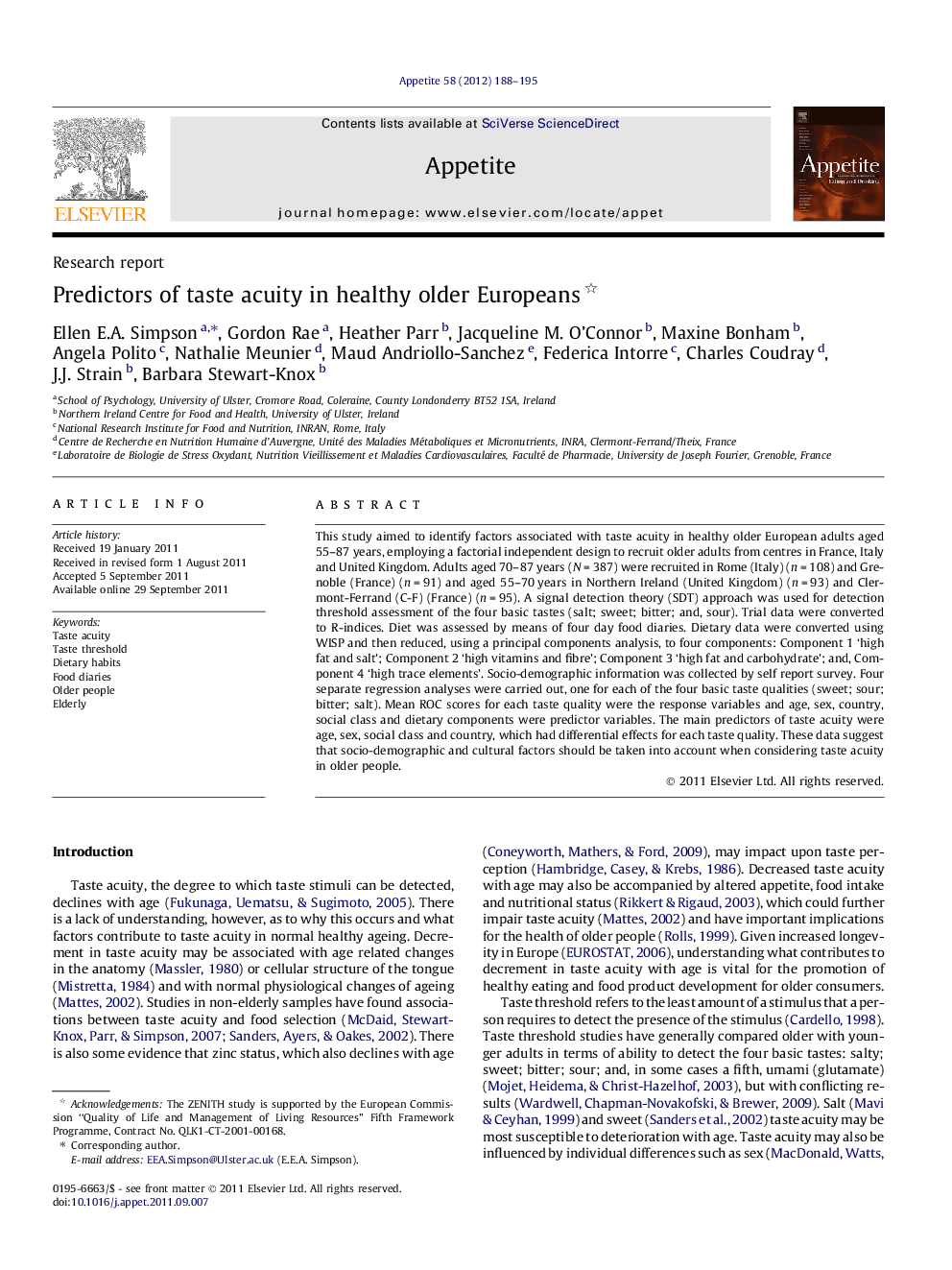| Article ID | Journal | Published Year | Pages | File Type |
|---|---|---|---|---|
| 940343 | Appetite | 2012 | 8 Pages |
This study aimed to identify factors associated with taste acuity in healthy older European adults aged 55–87 years, employing a factorial independent design to recruit older adults from centres in France, Italy and United Kingdom. Adults aged 70–87 years (N = 387) were recruited in Rome (Italy) (n = 108) and Grenoble (France) (n = 91) and aged 55–70 years in Northern Ireland (United Kingdom) (n = 93) and Clermont-Ferrand (C-F) (France) (n = 95). A signal detection theory (SDT) approach was used for detection threshold assessment of the four basic tastes (salt; sweet; bitter; and, sour). Trial data were converted to R-indices. Diet was assessed by means of four day food diaries. Dietary data were converted using WISP and then reduced, using a principal components analysis, to four components: Component 1 ‘high fat and salt’; Component 2 ‘high vitamins and fibre’; Component 3 ‘high fat and carbohydrate’; and, Component 4 ‘high trace elements’. Socio-demographic information was collected by self report survey. Four separate regression analyses were carried out, one for each of the four basic taste qualities (sweet; sour; bitter; salt). Mean ROC scores for each taste quality were the response variables and age, sex, country, social class and dietary components were predictor variables. The main predictors of taste acuity were age, sex, social class and country, which had differential effects for each taste quality. These data suggest that socio-demographic and cultural factors should be taken into account when considering taste acuity in older people.
► Factors associated with taste acuity in older European adults aged 55–87 years. ► A signal detection approach was used to look the four basic tastes. ► Predictors of taste acuity were age, sex, social class and country.
